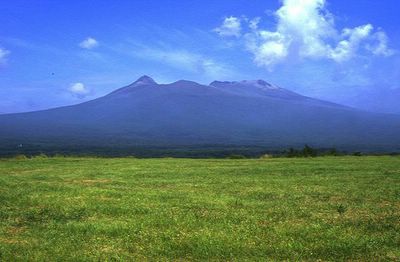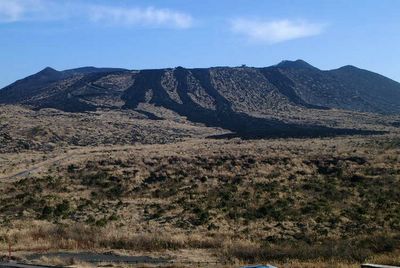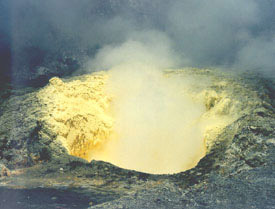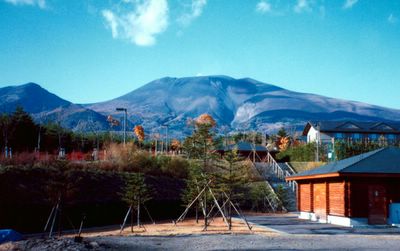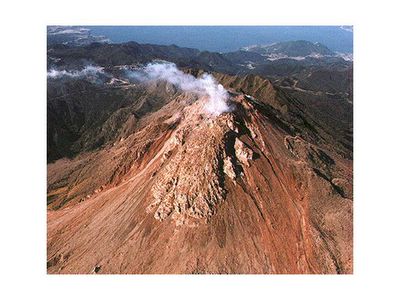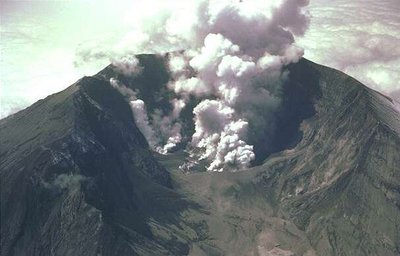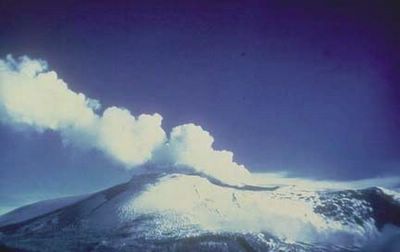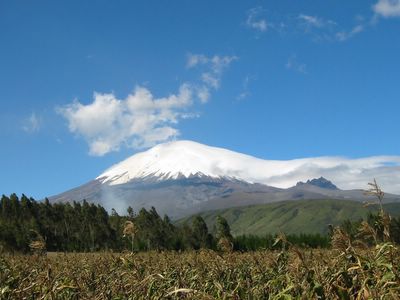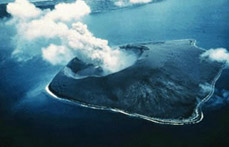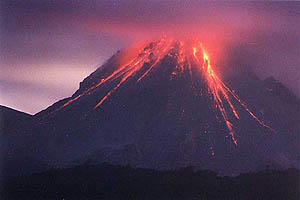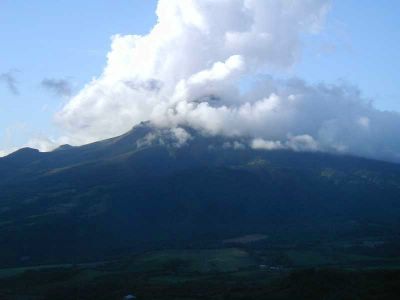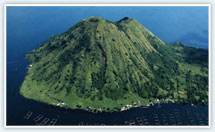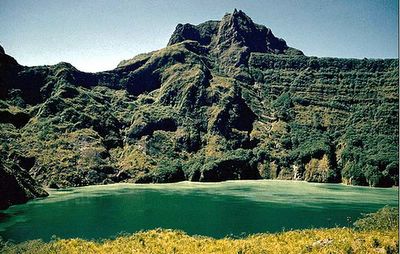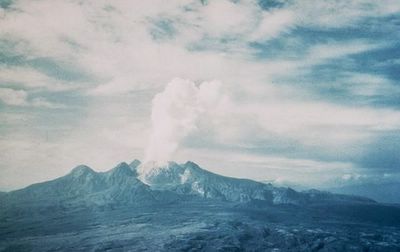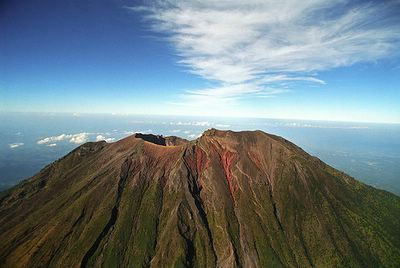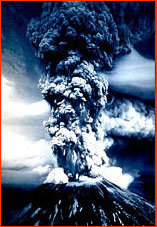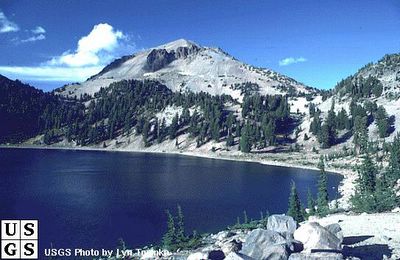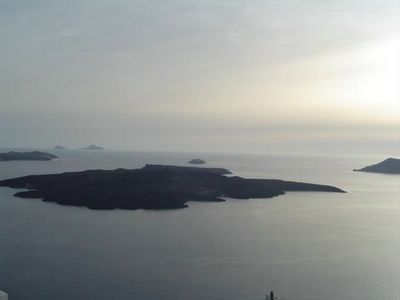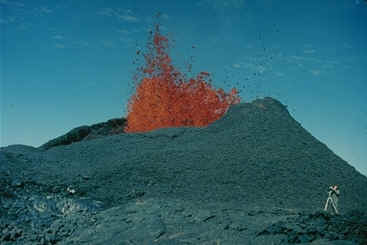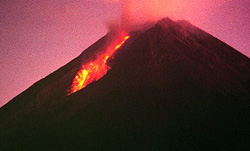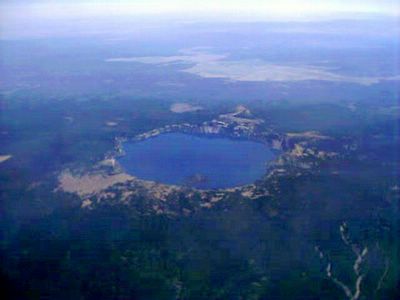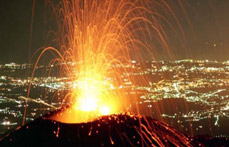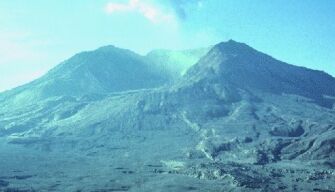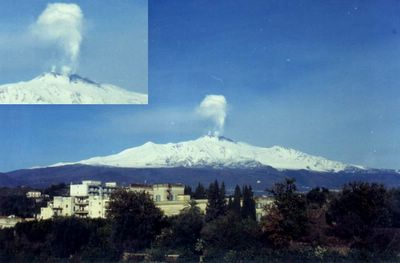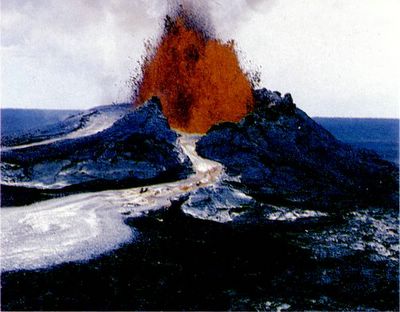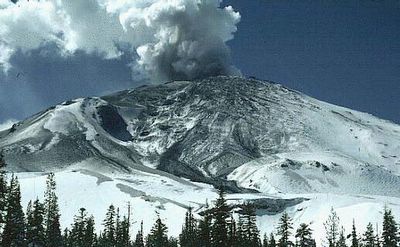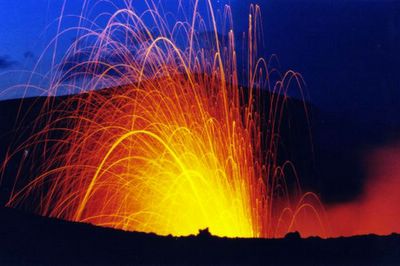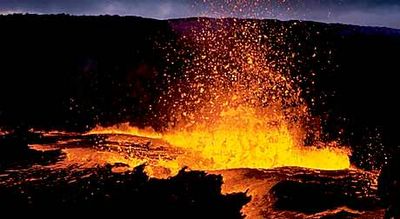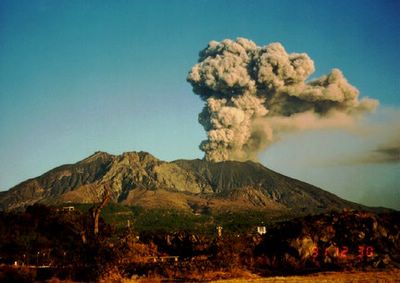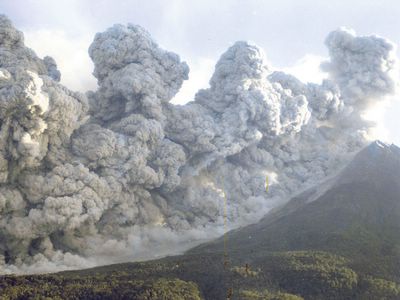Wednesday, February 16, 2005
Volcanoes of Death
- In 79, the Mt. Vesuvius volcano, in Italy, was responsible for 3,360 deaths. This eruption caused such ash falls and flows that they became the major causes of death.
- In 1631, the Mt. Vesuvius volcano, in Italy, was responsible for 3,500 deaths. This eruption caused such lava flows and mudflows that they became the major causes of death.
- In 1640, the Komagatake volcano, in Japan, was responsible for 700 deaths. This eruption caused a tidal wave which became the major cause of death.
- In 1741, the Oshima volcano, in Japan, was responsible for 1,475 deaths. This eruption caused a tidal wave which became the major cause of death.
- In 1772, the Papandayan volcano, in Indonesia, was responsible for 2,957 deaths. This eruption caused such ash flows that it became the major cause of death.
- In 1783, the Asama volcano, in Japan, was responsible for 1,377 deaths. This eruption caused such ash flows and mudflows that they became the major causes of death.
- In 1783, the Laki volcano, in Iceland, was responsible for 9,350 deaths. This eruption caused so much destruction that the population suffered from starvation which became the major cause of death.
- In 1792, the Unzen volcano, in Japan, was responsible for 14,300 deaths. This eruption caused the collapsing of the volcano and a tidal wave which became the major causes of death.
- In 1814, the Mayon volcano, in the Philippines, was responsible for 1,200 deaths. This eruption caused such mudflows that it became the major cause of death.
- In 1815, the Tambora volcano, in Indonesia, was responsible for 92,000 deaths. This eruption caused so much destruction that the population suffered from starvation which became the major cause of death.
- In 1845, the Ruiz volcano, in Colombia, was responsible for 700 deaths. This eruption caused such mudflows that it became the major cause of death.
- In 1877, the Cotopaxi volcano, in Ecuador, was responsible for 1,000 deaths. This eruption caused such mudflows that it became the major cause of death.
- In 1882, the Galunggung volcano, in Indonesia, was responsible for 4,011 deaths. This eruption caused such mudflows that it became the major cause of deaths.
- In 1883, the Krakatau volcano, in Indonesia, was responsible for 36,417 deaths. This eruption caused a tidal wave which became the major cause of death.
- In 1902, the Soufriere volcano, in St.Vincent, was responsible for 1,680 deaths. This eruption caused such ash flows that it became the major cause of death.
- In 1902, the Mt. Pelee volcano, in Martinique, was responsible for 29,025 deaths. This eruption caused such ash flows that it became the major cause of death.
- In 1911, the Taal volcano, in the Philippines, was responsible for 1,335 deaths. This eruption caused such ash flows that it became the major cause of death.
- In 1919, the Kelut volcano, in Indonesia, was responsible for 5,110 deaths. This eruption caused such mudflows that it became the major cause of death.
- In 1951, the Lamington volcano, in Papua/New-Guinea, was responsible for 2,942 deaths. This eruption caused such ash flows that it became the major cause of death.
- In 1963, the Agung volcano, in Indonesia, was responsible for 1,184 deaths. This eruption caused such ash flows that it became the major cause of death.
- In 1982, the El Chichon volcano, in Mexico, was responsible for 2,000 deaths. This eruption caused such ash flows that it became the major cause of death.
- In 1985, the Ruiz volcano, in Colombia, was responsible for 25,000 deaths. This eruption caused such mudflows that it became the major cause of death.
- In 1991, the Pinatubo volcano, in the Philippines, was responsible for 800 deaths. This eruption caused the roof to collapse and the population suffered from diseases which became the major causes of death.
As you can see, volcanoes may seem intriguing and mysterious as they display a strange mix of beauty and danger but it shows that something as phenomenal as a volcano must always be respected and observed from a distance otherwise, nature will take lives with little warning, affecting the lives of so many loved ones.
Mt. Vesuvius volcano, Italy
Komagatake volcano, Japan
Oshima volcano, Japan
Papandayan volcano, Indonesia
Asama volcano, Japan
Laki volcano, Iceland
Unzen volcano, Japan
Mayon volcano, Philippines
Tambora volcano, Indonesia
Ruiz volcano, Colombia
Cotopaxi volcano, Ecuador
Galunggung volcano, Indonesia
Krakatau (Krakatoa) volcano, Indonesia
Soufriere volcano, St.Vincent
Mount Pelee, Martinique
Taal volcano, Philippines
Kelut volcano, Indonesia
Lamington volcano, Papua/New-Guinea
Agung volcano, Indonesia
El Chichon volcano, Mexico
Pinatubo volcano, Philippines
Tuesday, February 15, 2005
Well Known Volcanoes
Here are the most well known volcanoes in the world.
- The Lassen Peak volcano is situated in California. It last erupted in 1918. This was the last eruption in the Cascade range before the eruption of Mt. St.Helen in 1980.
- The Thira (Santorini) volcano, in Greece, is a volcanic island that has a volcanic bay. During an eruption, the Minoan population on Crete was destroyed by ashes falling and tsunamis.
- The Mauna Loa volcano in Hawaii, is the largest volcano as it measures 60 miles at the base and is erected from the sea floor up.
- The Krakatoa volcano that is situated in Indonesia, has caused a high level of both fatalities and damages. In 1883, there was 36,000 deaths, 24 sq. mi of destruction and the noise from the eruption was heard 3,000 miles away.
- The Merapi volcano that is also in Indonesia happens to be the most active one in this country and has the most "glowing clouds" than any other volcano.
- The Mount Vesuvius volcano in Italy, buried Pompeii in 79 B.C. during a Plenian eruption.
- The Cotopaxi volcano that is situated in Mexico caused a disastrous mud flow over an area of 150 miles, during its eruption in 1877.
- The Crater Lake volcano that is situated in Oregon, has displayed 43,000 times the force of an atomic bomb during its last eruption 6,600 years ago.
- The Mount Mayon volcano, in the Philippines, is considered to have the best shape of any strato volcanoes.
- The Mount Etna volcano that is in Sicily, is still very active and is responsible for creating craters, even now.
- The Mount Rainier volcano, in Washington, displayed a 70 miles lava flow during the Prehistoric Era.
- The Mount St.Helen volcano, in Washington, caused an earthquake in 1980 when it erupted which was also responsible for the largest landslide in the history of America.
As you are now aware, each one of these volcanoes has a characteristic that distinguishes them from the other ones, all over the world.
Lassen Peak volcano, California, USA
Thira (Santorini) volcano, Greece
Mauna Loa volcano, Hawaii, USA
Merapi volcano, Indonesia
Crater Lake volcano, Oregon, USA
Mount Etna volcano, Sicily, Italy
Mount Rainier volcano, Washington, USA
Mount St.Helen volcano, Washington, USA
Saturday, February 12, 2005
Did you know?
- When Mount St.Helen erupted on May 18 of 1980, it was considered dormant (asleep) for a period of one hundred years before it "woke up" again. This eruption cost the lives of 58 people and $1.2 billion in damages.
- There are more than 500 active volcanoes, in the world.
- During the Mount St. Helen's eruption, a lateral blast of rock debris moved at a speed of 250 miles per hour.
- About 6, 600 years ago, a volcano that lost his top due to a series of violent eruptions was responsible for the creation of Crater Lake.
- The origin of the Earth's surface is more than 80% volcanic.
- The ocean floor and some mountains were created by multiple volcanic eruptions.
- The Earth's atmosphere was formed by volcanic gaseous emissions.
Types of Volcanic Eruptions
- A mild eruption is observed when some steam and gases are the only elements coming out in some cases and in others when some lava is quietly descending on the sides of the volcano.
- A violent eruption is observed when a loud and violent explosion blasts rocks, steam, ashes, gases and important quantities of lava. These eruptions are often spectacular and sometimes even famous.
The type of volcanic eruptions is often named after a famous volcano that has similar characteristics. A volcano might display only one type of eruption as another one might display several ones.
- The Plinian eruption is the most powerful type which will eject lava during violent explosions. It sends ashes, and gases miles into the atmosphere. Mount St.Helen displayed this type of eruption on May 18, 1980. Large areas, up to hundreds of miles downwind, can be affected by the deadly pyroclastic flows caused by the mix of ashes and gases that were released during the eruption.
- The Phreatic eruption is caused by the blast of steam that is produced by the cold ground or water on the surface that comes in contact with hot rock or magma. During the type of eruption, only steam and fragments of solid rock are projected into the air. There is no magma that erupts in this case.
- The Strombolian eruption sends strands of lava into the air then descends the sides of the volcano resembling small rivers. A good example of this type of volcanic eruption is the Irazùù Volcano in Costa Rica that erupted in 1965.
- The Hawaiian eruption happens when the lava erupts from either the central vent or linear vents coming out of fissures. The lava then streams down the sloped sides of the volcano. An eruption that happened in a linear vent was the Mauna Loa Volcano in 1950 and a good example of a central vent eruption was in the Kilauea Iki Crater of the Kilauea Volcano, in 1959.
- The Vulcanian eruption is displayed when a thick cloud mixed of ashes and gases explodes from the main vent rising high over the summit as a white cloud surrounding the upper part of the volcano. In 1947, the Parìcutin Volcano was a good example of this type of volcanic eruption.
- The Vesuvian eruption as demonstrated by Mount Vesuvius in Italy, A.D. 79, discharges a thick cauliflower-shaped cloud that contains enormous quantities of ashes and gases that erupts violently high up in the sky.
- The Peléan also known as Nuée ardente (glowing cloud) type of volcanic eruption discharges a great amount of ash, dust, gas and lava fragments that are exploding from the central vent in a tongue-shaped avalanche of glowing elements that move down the sides of the volcano at speeds as high as one hundred miles per hour. This type of eruption was demonstrated by the Mayon Volcano in the Philippines, in 1968.
As you can see, a volcano has its own personality to show the world and it does that in a variety of ways. Beauty, danger and mystery mix together to offer spectacular and sometimes unpredictable, volcanic eruptions.
Type of eruption: Mild eruption
Type of eruption: Violent eruption
Type of eruption: Plinian eruption
Type of eruption: Phreatic eruption
Type of eruption: Strombolian eruption
Type of eruption: Hawaiian eruption
Type of eruption: Vulcanian eruption
Type of eruption: Vesuvian eruption
Tuesday, February 08, 2005
What is volcanic activity?
Scientists classify the volcanic activity on a three levels scale. The levels are: active, dormant and extinct. An active volcano can erupt on a regular basis or periodically, for example, every ten years. The dormant volcano can be inactive over a long period of time, for example over a century and then all of a sudden, it has an eruption. The extinct volcano has been inactive for thousands of years and shows no sign of ever erupting again.
What is a volcano?
At a certain level of pressure, the top of the vent which is partly covered by hardened lava and even plants, depending how long ago the volcano erupted, the explosion might be violent or more quiet. Then the magma is released out of the vent, flowing out of the volcano. It is now called lava.
Some volcanoes are now extinct which means that there was no volcanic activity recorded for centuries. Some volcanoes are dormant which means that they have not erupted in a long time. Other volcanoes are active but the timing between the eruptions vary greatly.
Volcano eruptions have been known to destroy forests and villages but also to have affected or even caused other natural disasters such as: mudflows, flashfloods, earthquakes, rockfalls and even tsunamis.
The pulverized rocks become ashes which can be acidic, smelly, glassy, harsh and gritty. It is said that the ashes of volcano eruptions can remain partially into the atmosphere for up to two years, affecting the weather conditions.
